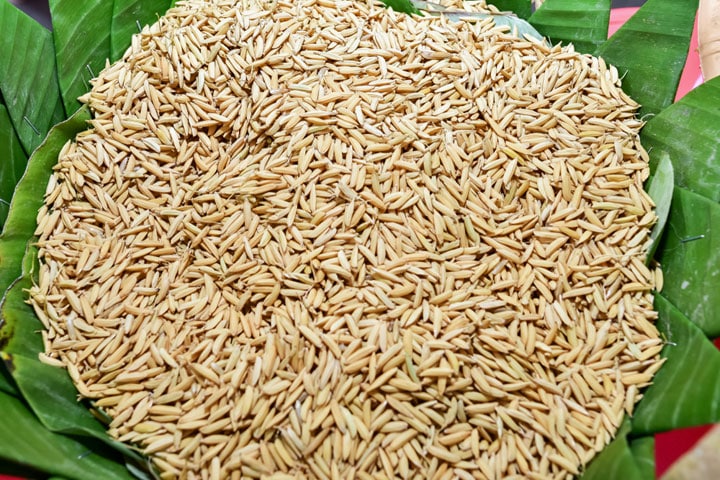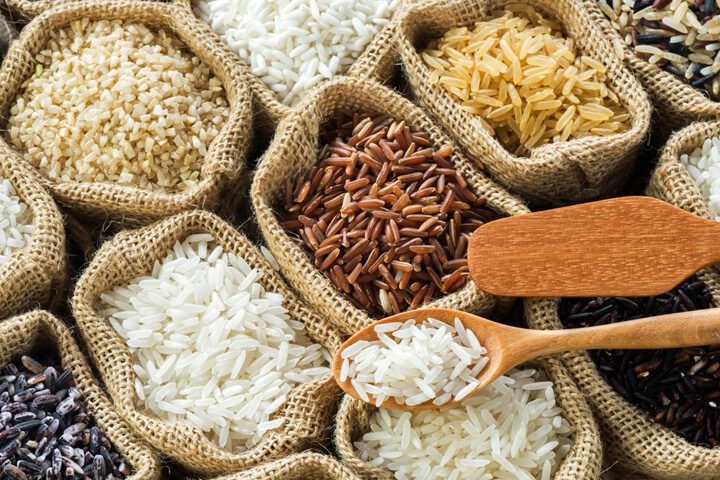Thailand's position in the world rice market

Jasmine Rice 105
The famed jasmine rice, the star of Thailand's grain exports, won a top prize at the World Rice Conference this month for the sixth time since 2009. The “Khao Dawk Mali 105” – a code name for the most famous Thai jasmine rice variety – beat rivals from Cambodia, China, the United States and Vietnam with “its combination of aroma, texture and taste,” said the jury of the annual Rice Suppliers Forum and policymakers.
Thai growers attributed the win to an early cold wind that swept through northeastern Thailand earlier this year, making the grains "particularly shiny, strong and fragrant," said Charoen Laothamatas, president of the Thai Rice Exporters Association.
Competition
Nevertheless, Thai jasmine rice exports face stiff competition from cheaper varieties in the region. It is acknowledged that it is a difficult year for Thailand, which will see the lowest rice exports in two decades due to falling global demand caused by the corona pandemic, the strength of the baht and export competition from the likes of India, Vietnam and China.
In 2015, India already dethroned Thailand as the world's largest rice exporter, a position Thailand held for 35 years. India will export about 14 million tons of rice this year, up from 9,9 million tons last year.
This year, Thailand dropped to number 3, while Vietnam took second place. From January to October, Thailand exported 4,4 million tons of rice, 31 percent less than a year earlier. In comparison, Vietnam shipped 5,3 million tons of rice in the same period, a decrease of 8 percent.
China
While China remains an important market for Thai jasmine rice, known as hom mali, Charoen of the Thai Rice Exporters Association said Thai growers have been hit hard by a drought over the past two years, which has driven up prices of plain white rice. China then started looking for other suppliers. It recently imported rice from India for the first time in decades.
While China has traditionally been a rice importer, the expansion of China's rice production could threaten Thailand, said Chookiat Ophaswongse, honorary president of the Thai Rice Exporters Association. China shipped 2,7 million tons of rice last year and is expected to export 3,2 million tons this year.
Thai white rice also lost this year to cheaper varieties, which are offered by Vietnam in key Asian markets such as the Philippines. China also beat Thailand in key African markets with cheaper prices.
Thailand will have to come up with a plan to regain dominance in the world rice export. Observers say more incentives and support for farmers will be needed.
The future
The above text is the beginning of a long article in the South China Morning Post, which continues with a number of observations, suggestions and recommendations from international expert bodies. You can read the whole story, which is accompanied by some interesting short videos, at this link: www.scmp.com/



Well,
Not so surprising, if you, as a world rice nation, collapse, if you let Thailand's largest exporter go bankrupt. Then all contacts will also be lost, but they don't notice that here.
Nor has anyone raised the question why the largest exporter has gone bankrupt.
That was an easy answer, due to the high Baht.
Which is artificially manipulated by the Thai National Bank, which the International Monetary Fund and America have protested against. But they still do. If the value of the Bath goes down because of the currency market, the National Bank buys money to raise the value of the Bath.
Given the economic situation in Thailand, the Baht will now certainly be at 40 to 45 if not 50, compared to the Euro.
The article is about rice and not about the baht. Because the whole story you outline about the baht is the opposite of reality. First let me tell you that the Thai Foreign Currency reserves, the foreign currencies, are among the highest in the world. At the end of October this was USD 236,6 billion and on January 01 it was USD 214,6 billion; reserves have increased by USD 22 billion. Suppose Thailand sells these 22 billion foreign currencies, it will receive the Thai baht in return, with the result that the Thai baht is demanded and then increases in value. Be happy otherwise the baht might have been worth close to 30 baht for a Euro. And where do those foreign currencies come from; well, for example, with the sale of rice abroad because the proceeds are in foreign currencies, or with tourism. And now you see that foreign tourism has disappeared, otherwise the baht would have been worth even more and/or the currency reserves would have been much higher. The whole story of currency manipulation is therefore not correct, you could argue the opposite given the facts.
What the US is protesting against, Trump then, is that there is a large trade surplus, but more countries have that with the US, he wants more American products to be sold abroad and more produced locally in the US.
To that extent it is good that they export less rice because it has a declining effect on the baht against the Euro.
Here is a link about the Thai currency reserves:
https://www.ceicdata.com/en/indicator/thailand/foreign-exchange-reserves#:~:text=Thailand%27s%20Foreign%20Exchange%20Reserves%20was,Jan%201993%20to%20Oct%202020.
I totally agree with Laksi, the artificial value of Thai Baht is the biggest culprit. This situation, supported by the Thai National Bank and the Thai elite, has been putting Thailand's international trade position at great risk for years. The Bath should indeed return to 50 compared to the Euro. It would be a huge boost for the Thai farmers and possibly regain their position on the rice market, it would also be interesting for further foreign investments.
You obviously, like Laksi, have no pertinent knowledge about the currency markets. Just read Ger-Korat's story, because he has told it correctly.
1) As for the price; years ago, under the Thaksin regime, a buy-back program was announced…it was a flop…after all, the same quality was available in Cambodia and also in India…for half the price.
2) The Thai use so many uncontrolled pesticides that they can no longer sell their rice to Taiwan, for example.
It is a sad loss….
Beats. The country is heavily polluted. Who still wants that rice. There is also nothing to earn. Kilo yields are bad. Cost high. Sugar is much better. Much of the land is actually not suitable for agriculture.
I cannot see whether the country is heavily polluted in the analysis certificates that we have to give to our customers. Sugar is another product that you would not really want to produce because it is the heroin of billions of people with huge health costs.
I would think it would be cool if the government were to make efforts to increase rice harvests in disadvantaged areas and try to secure global funds for the climate agreement in disadvantaged areas in order to fill the disadvantaged areas with functional forests again. It's not too late to restore the demolished weather is my Christmas thought 😉
Dear Ger Korat,
Do you think that when you see the Thai government's balance sheet, it will show the black figure of USD 214,6 billion?
Dear Kor11, hereby the balance sheet of the Bank of Thailand:
https://www.bot.or.th/App/BTWS_STAT/statistics/BOTWEBSTAT.aspx?reportID=80&language=ENG
I mentioned 536 billion USD at the end of October, meanwhile November is also known and is now at 242 billion USD in foreign currencies (see point 5 in the balance sheet).
There is a typo in my earlier answer to kor11: October was USD 236 billion